Main information:
Pompeiianum
Tour
You can find the ground plans of the Pompeiianum here.
On the ground floor are the reception and guest rooms, the kitchen and the dining room, grouped around two inner courtyards, the atrium with its water basin and the viridarium, the garden, in the back part of the house. The interior of the Pompeiianum was completed in 1850: the magnificent paintings in the rooms and the mosaic floors were copied from or based on ancient models. The antique bronze kitchen equipment and the bronze candelabra are casts from original articles.
After severe damage in the Second World War, the Pompeiianum was restored and rebuilt in several phases beginning in 1960. Since 1994 original Roman works of art from the State Collections of Antiquities and the Glyptothek in Munich have also been on permanent display here. The most valuable exhibits in addition to Roman marble sculptures, bronze miniatures and everyday items from Roman domestic life are two marble thrones of divinities.
Changing special exhibitions on archaeological topics are also held every year.

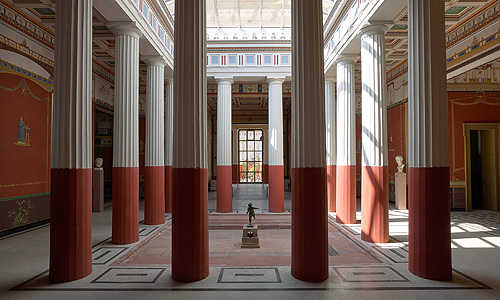
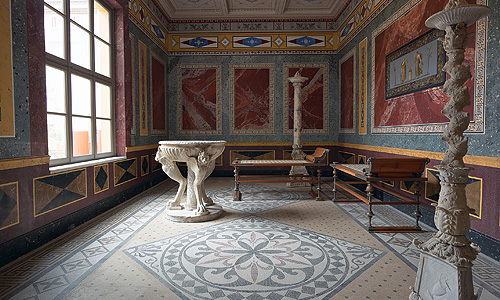
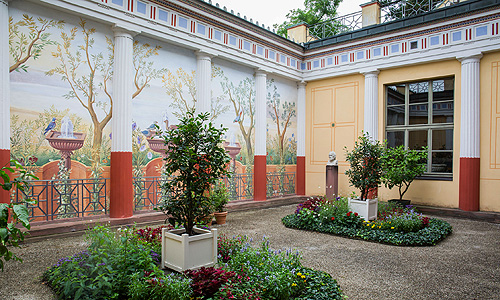
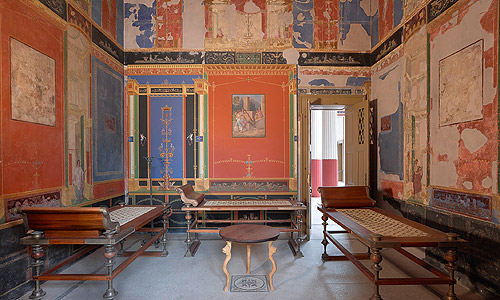
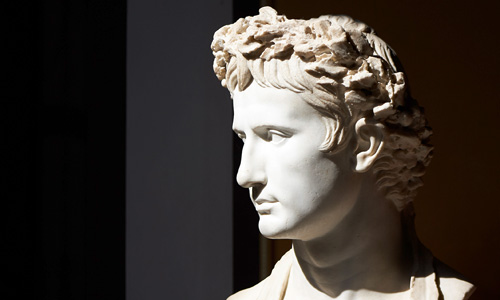
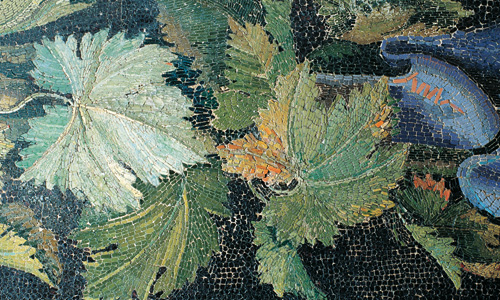
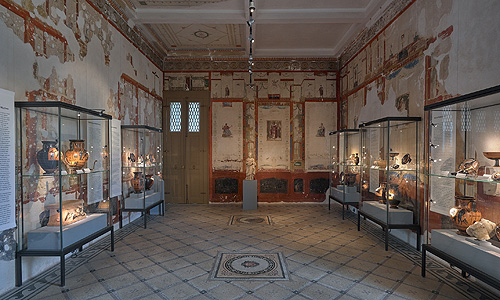
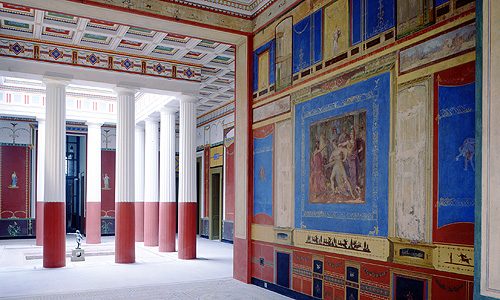
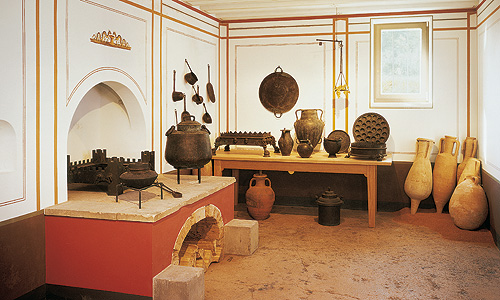
Recommendation in the social media
Facebook Twitter Google Plus